Mosques in Asia stand as testaments to the region’s rich cultural tapestry, blending spiritual significance with architectural marvels. These sacred spaces serve as more than just places of worship; they are centres of learning, community gathering, and artistic expression. From the towering minarets of historic mosques to the innovative designs of modern structures, Asia offers a diverse array of Islamic architecture that reflects local traditions and global influences. In this journey through the continent, we’ll explore different types of mosques in Asia, from the grand imperial mosques to intimate neighbourhood sanctuaries, each telling its own story of faith, history, and cultural exchange.
10 Famous Mosques In Asia
Embark on a spiritual and architectural odyssey as we unveil the most captivating mosques in Asia, each a masterpiece in its own right.
1. Jama Masjid, India
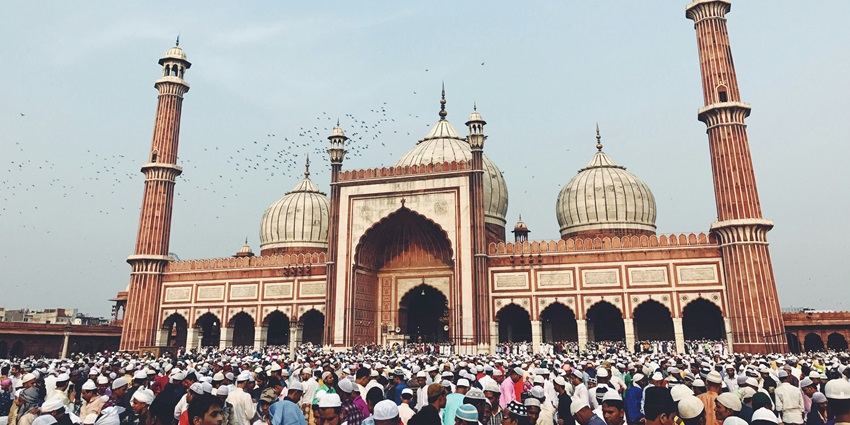
Photo: Naveed Ahmed / Unsplash
The Jama Masjid in Delhi stands as a crowning jewel of Mughal architecture, its red sandstone and white marble facade a testament to Emperor Shah Jahan’s vision. This architectural marvel can accommodate 25,000 worshippers, making it one of India’s largest mosques. Its three grand gates, towering minarets, and intricate carvings offer visitors a glimpse into the opulence of the Mughal era. At the same time, its spiritual ambience provides a serene retreat from the bustling city outside.
Location: Old Delhi, India
How To Reach: Easily accessible via Delhi Metro (Chawri Bazaar station) or auto-rickshaw.
Timings: Open daily from sunrise to sunset, except during prayer times
Major Attraction: Climb the southern minaret for panoramic views of Old Delhi
2. Shah Faisal Mosque, Pakistan
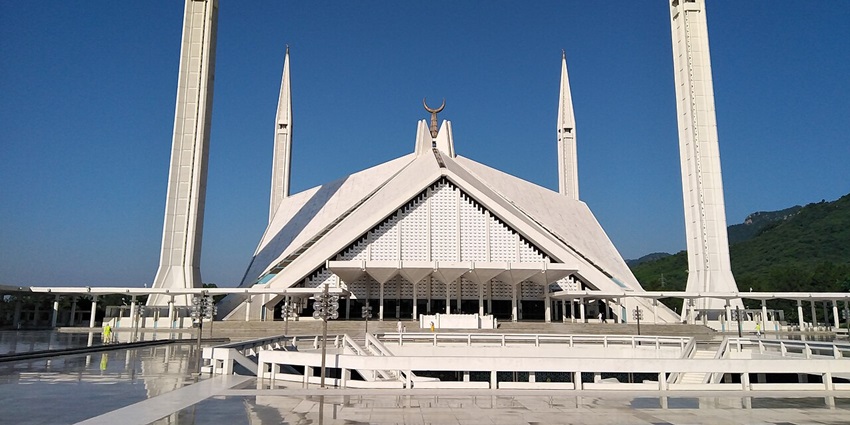
Photo: Abdul Haseeb Mustafa / Wikimedia Commons
Nestled at the foot of the Margalla Hills, the Shah Faisal Mosque in Islamabad is a modern architectural wonder that breaks from traditional mosque design. Completed in 1986, its unique tent-like structure, inspired by Bedouin tents, can hold 300,000 worshippers. This mosque, a gift from Saudi Arabia, symbolises Pakistan’s Islamic identity and serves as a beacon of contemporary Islamic architecture, blending modernity with tradition in a striking visual statement.
Location: Islamabad, Pakistan
How To Reach: Accessible by local bus or taxi from anywhere in Islamabad
Timings: Open daily, with specific hours for non-Muslims
Major Attraction: The mosque’s unique architecture against the backdrop of Margalla Hills
3. Crystal Mosque, Malaysia
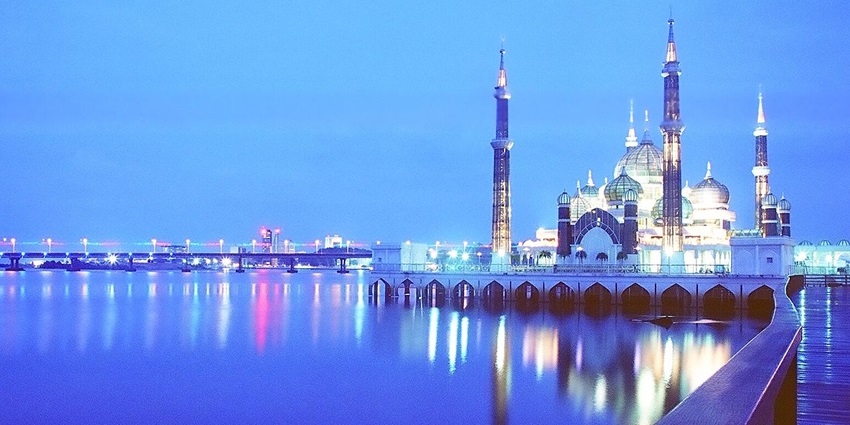
Photo: Mshahrazif / Wikimedia Commons
The Crystal Mosque, or Masjid Kristal, in Kuala Terengganu, is a dazzling example of modern Islamic architecture. Completed in the year 2008, this mosque shimmers with its steel and glass construction, creating a crystal-like appearance that’s particularly stunning when illuminated at night. It can accommodate 1,500 worshippers and blend traditional Islamic motifs with contemporary design, offering visitors a unique spiritual and visual experience.
Location: Wan Man Island, Terengganu, Malaysia
How To Reach: Take a boat from Kuala Terengganu’s waterfront
Timings: Open daily from 8 AM to 10 PM
Major Attraction: Evening light show that transforms the mosque into a glowing spectacle
4. The Great Mosque Of Xi’an, China
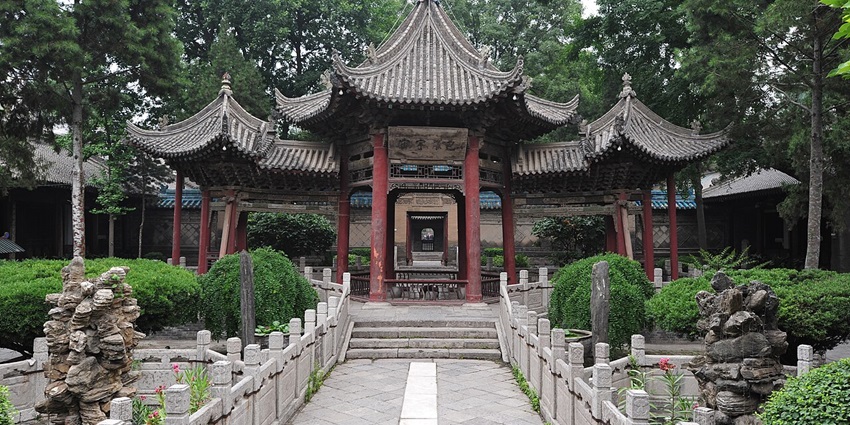
Photo: chensiyuan / Wikimedia Commons
The Great Mosque of Xi’an, dating back to 742 AD, is one of China’s oldest and most fascinating mosques. Unlike many mosques in Asia, it uniquely blends traditional Chinese architecture with Islamic elements, reflecting the cultural synthesis of China’s Muslim community. Its series of courtyards, adorned with gardens and pavilions, lead to a prayer hall that can hold 1,000 worshippers, offering a tranquil oasis in the bustling city of Xi’an.
Location: Muslim Quarter, Xi’an, China
How To Reach: Walking distance from the Drum Tower in Xi’an’s city centre
Timings: Open daily from 8 AM to 7 PM
Major Attraction: The blend of Chinese and Islamic architectural styles
5. Sultan Ahmed Mosque, Turkey
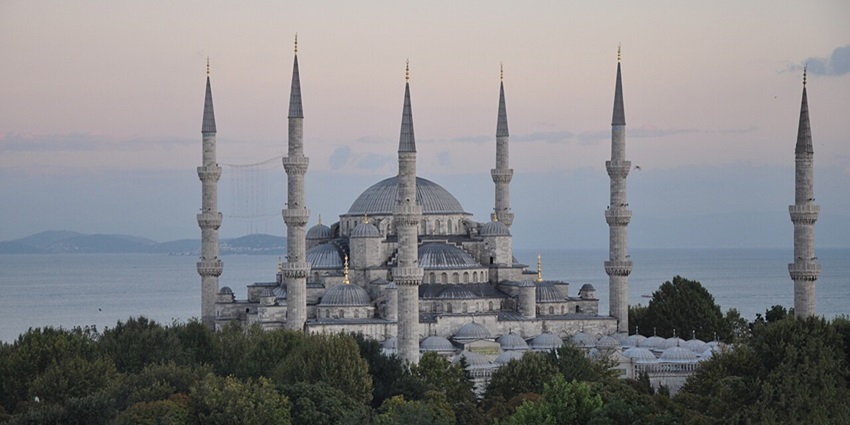
Photo: Jorge Láscar / Wikimedia Commons
Istanbul’s Blue Mosque officially known as Sultan Ahmed Mosque, completed in 1616, is an iconic symbol of Ottoman architecture and Islamic art. Its cascading domes and six slender minarets create a majestic silhouette, while the interior, adorned with over 20,000 handmade blue Iznik tiles, gives the mosque its popular name. This architectural masterpiece continues to serve as both an active place of worship and a major tourist attraction, captivating visitors with its grandeur and beauty.
Location: Sultanahmet, Istanbul, Turkey
How To Reach: Easily accessible by tram (Sultanahmet stop)
Timings: Open daily, closed to tourists during prayer times
Major Attraction: The mesmerising blue tilework and stained glass windows
6. Sheikh Zayed Grand Mosque, UAE
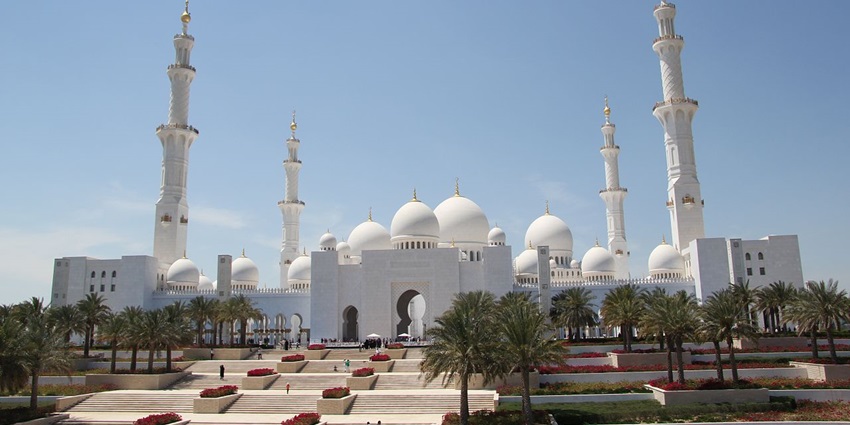
Photo: FritzDaCat / Wikimedia Commons
The Sheikh Zayed Grand Mosque in Abu Dhabi, completed in 2007, is a modern marvel that showcases the best of contemporary Islamic architecture. With its 82 domes, over 1,000 columns, and the world’s largest hand-knotted carpet, this mosque is a testament to artistic excellence and spiritual grandeur. It is capable of accommodating over 40,000 worshippers and is a symbol of cultural diversity and religious tolerance in the UAE.
Location: Abu Dhabi, United Arab Emirates
How To Reach: Accessible by bus or taxi from anywhere in Abu Dhabi
Timings: Open daily, with guided tours available
Major Attraction: The stunning night illumination that bathes the mosque in ethereal light
7. Nasir Al-Mulk Mosque, Iran
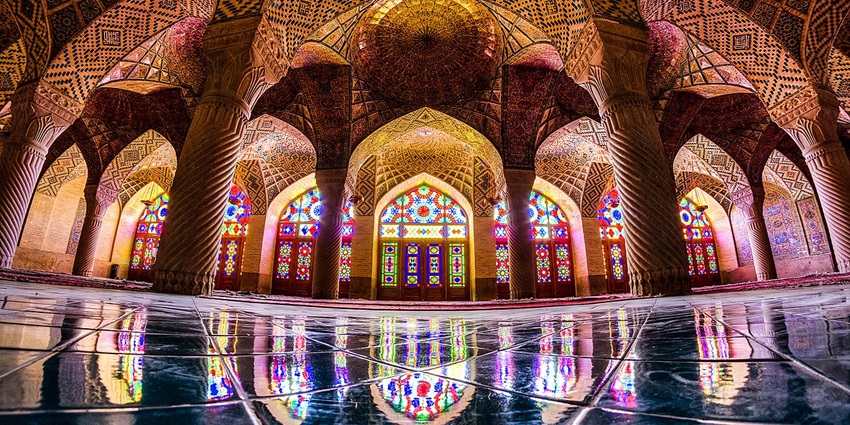
Photo: MohammadReza Domiri Ganji / Wikimedia Commons
Nasir al-Mulk Mosque, also known as Pink Mosque, completed in 1888, is a kaleidoscope of colour and light. Its fame comes from the stunning interplay of sunlight through its stained-glass windows, creating a dazzling display of colours across its Persian carpets. The mosque’s intricate tile work, featuring a predominant pink hue, and its unique lighting effects make it a favourite among photographers and art enthusiasts alike.
Location: Shiraz, Iran
How To Reach: Located on Lotf Ali Khan Zand Street; accessible by local transport
Timings: Open daily from 8 AM to 5 PM
Major Attraction: Best visited in the morning to see the vibrant light display through stained glass
8. Istiqlal Mosque, Indonesia
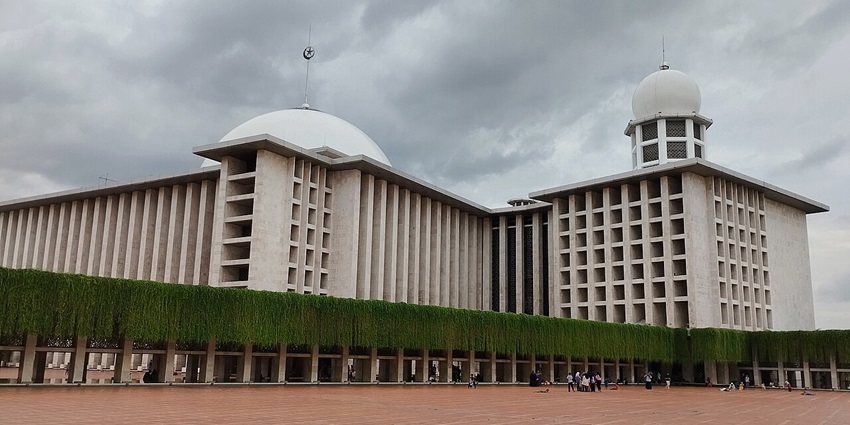
Photo: Baqotun0023 / Wikimedia Commons
Jakarta’s Istiqlal Mosque, completed in the year 1978, is the largest mosque in Southeast Asia and a symbol of Indonesia’s independence. Its minimalist design, featuring a massive central dome, can accommodate over 120,000 worshippers. The mosque’s proximity to Jakarta Cathedral symbolises religious harmony in Indonesia, making it a place of worship and a monument to national unity and tolerance.
Location: Jakarta, Indonesia
How To Reach: Easily reachable via public transportation or taxi services
Timings: Open daily from 8 AM to 4 PM
Major Attraction: The mosque’s design represents the five pillars of Islam
9. Putra Mosque, Malaysia

Photo: ReubenST / Wikimedia Commons
The Putra Mosque in Putrajaya, completed in the year 1999, is a stunning example of modern Islamic architecture with its distinctive pink dome. Situated beside the picturesque Putrajaya Lake. This mosque can accommodate 15,000 worshippers and is famous for its intricate Islamic geometric patterns and calligraphy. The mosque’s reflection in the lake creates a mesmerising view, mainly during sunset.
Location: Putrajaya, Malaysia
How To Reach: Accessible via taxi or public transport from Kuala Lumpur, approximately 25 km away
Timings: Open Saturday to Thursday from 9 AM to 12:30 PM and 2 PM to 4 PM; Fridays from 3 PM to 4 PM
Major Attraction: Offers stunning views of Putrajaya Lake
10. Zahir Mosque, Malaysia
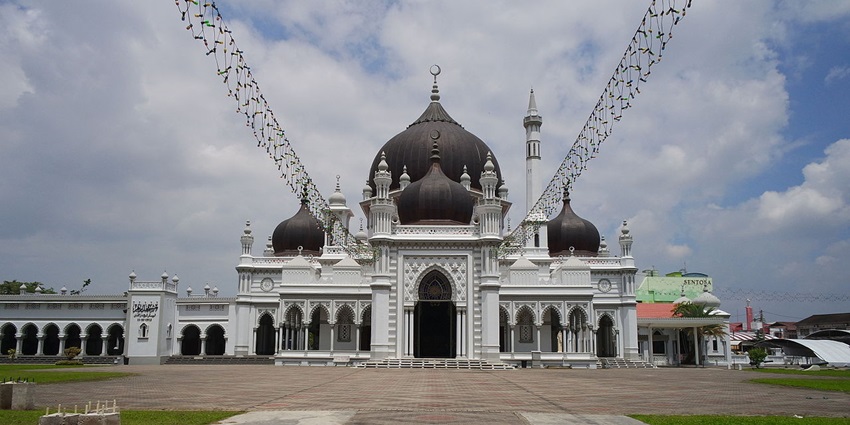
Photo: Jensennbj / Wikimedia Commons
The Zahir Mosque in Alor Setar, built in 1912, is one of Malaysia’s grandest and oldest mosques. Its design, influenced by Moorish architecture, features distinctive black domes and elegant arches. As the state mosque of Kedah, it holds significant historical and cultural importance. The mosque’s serene atmosphere and beautiful gardens make it a popular spot for both worship and tourism.
Location: Alor Setar, Malaysia
How To Reach: Centrally located; easily accessible by local transport or walking
Timings: Open daily; check specific hours during prayer times
Major Attraction: Features beautiful gardens surrounding the mosque that enhance its serene atmosphere
The mosques in Asia offer a glimpse into the rich tapestry of Islamic architecture and culture across the continent. Each structure tells a unique story of faith, artistry, and cultural exchange, from the historic grandeur of India’s Jama Masjid to the modern splendour of UAE’s Sheikh Zayed Grand Mosque. Start planning your spiritual and architectural odyssey with TripXL today for a seamless experience.
Cover Photo: Bernard Spragg / Wikimedia Commons


 WhatsApp
WhatsApp
 Twitter
Twitter









